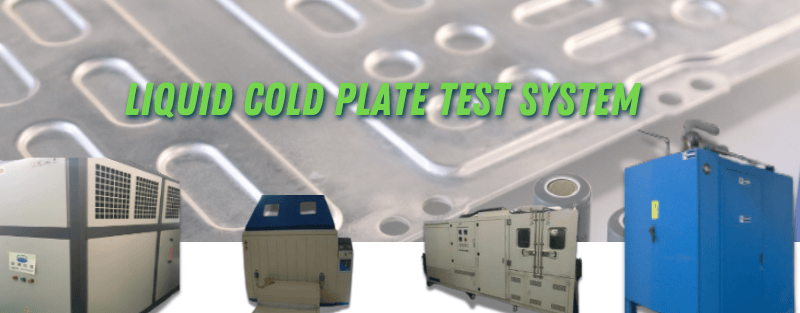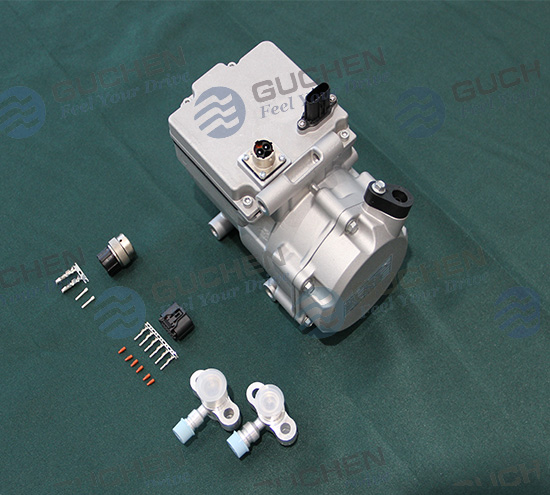Stamped liquid cold plates are high-efficiency battery cooling devices. They are manufactured using stamping and brazing techniques to achieve excellent heat dissipation performance. The production process of stamped cold plates is complex, requiring precise equipment and strict process control. However, their superior thermal performance and high production efficiency make them widely used in electric vehicles, power systems, and other applications.
Manufacturing process of stamped liquid cold plates:
1. Stamping
Stamping is the first and one of the most critical steps in making a liquid cold plate. It determines the plate's appearance and the physical characteristics of its channels. During this process, flatness and channel depth are carefully inspected to ensure product quality. Stamping also needs to consider design requirements, including the shape, size, and position of the channels, as well as the overall dimensions and shape of the plate. These factors directly affect the heat dissipation performance and service life of the cold plate.
2. Degreasing and Flux Coating
The second step is degreasing, which removes oil and impurities from the surface of the stamped plate. After cleaning, a flux coating is applied to prepare the plate for brazing. The selection and application of flux have a significant impact on the quality of the cold plate. Generally, flux must melt at brazing temperatures and form good wetting with the plate material, allowing proper flow and diffusion of the filler metal. After stamping, the plate has a lightweight structure. This process uses efficient aluminum stamping on one or both sides, eliminating CNC machining time and further reducing production time and cost.
3 . Brazing and Quality Inspection
Before brazing, all parts of the
cold plate are assembled to ensure proper joining. Brazing is a metal joining process where the filler metal is heated and melted to connect the plate components. The process requires precise control of temperature and time to ensure complete bonding while avoiding overheating or deformation of the plate.
After brazing, quality inspection is performed to ensure the plate’s sealing performance and prevent leakage during use. Helium leak testing is conducted, and the shape and dimensions of the plate are checked against design specifications to guarantee reliable performance in real-world applications.
 Partial view of Guchen’s equipment used for liquid cold plate testing
Partial view of Guchen’s equipment used for liquid cold plate testing
Quality inspection is performed after brazing to check the sealing of the cold plate and ensure no leakage occurs during use. Helium leak testing is conducted, followed by verification of shape and dimensional requirements to guarantee the cold plate’s performance and reliability in actual operation.
Key Requirements for Liquid Cold Plates :
High Heat Dissipation: The plate must efficiently remove excess heat generated by the battery during operation, preventing overheating.
High Reliability: The plate must withstand harsh automotive environments, including vibration, shock, and extreme temperature variations. High-voltage batteries make coolant leaks a serious issue. Even with insulated coolant, external contaminants can reduce insulation performance, making reliable sealing essential.
Precise Thermal Design: Temperature differences within the system must be minimized to ensure optimal battery performance and longevity, as battery life and aging are closely related to operating temperature.
Strict Weight Requirements: Cold plates must meet strict weight standards to maintain the energy density of the battery system. Cooling systems that significantly reduce energy density are unacceptable for customers and designers.
Advantages of Stamped Brazed Liquid Cold Plates
1.1 Channels can be freely designed, providing a large contact area, excellent heat transfer, high production efficiency, and good pressure resistance and strength.
1.2
Large cold plates can be manufactured, suitable for large electronic devices. Energy storage batteries are ideal applications. For example, a continuous tunnel brazing furnace can weld large components. A cold plate for 52 battery cells can reach 120 × 85 cm.
1.3 Brazing temperatures can reach 500–700℃. Brazing strengthens aluminum plates and allows joining of different aluminum types, such as pure aluminum and aluminum alloy, with high joint strength and minimal risk of leakage.
1.4 Brazing can connect thin and thick plates without creating weld protrusions.
Stamped liquid cold plates are high-performance thermal management devices. Despite their complex manufacturing process, strict control during production and standardized inspections ensure optimal performance and reliable quality, making them suitable for use in electric vehicles, power systems, and other applications requiring efficient battery cooling.










